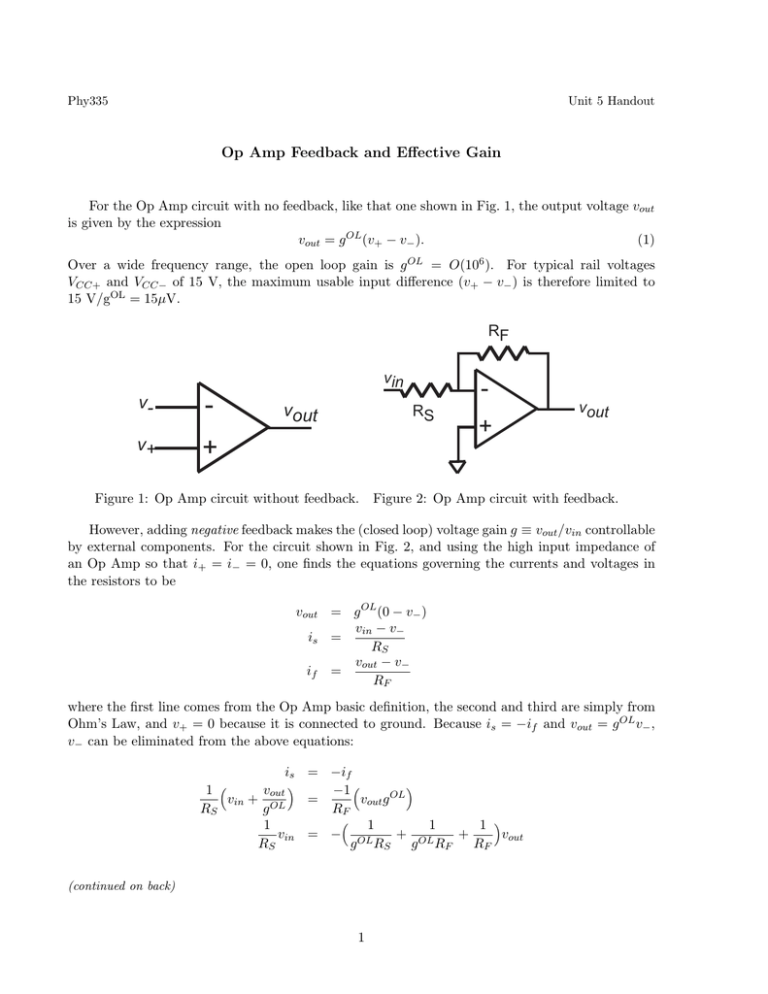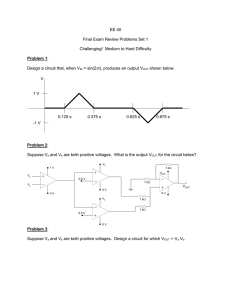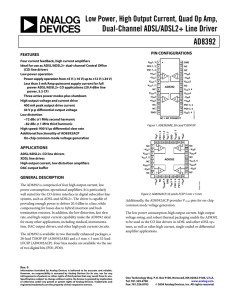vout v
advertisement

Phy335 Unit 5 Handout Op Amp Feedback and Effective Gain For the Op Amp circuit with no feedback, like that one shown in Fig. 1, the output voltage vout is given by the expression vout = g OL (v+ − v− ). (1) Over a wide frequency range, the open loop gain is g OL = O(106 ). For typical rail voltages VCC+ and VCC− of 15 V, the maximum usable input difference (v+ − v− ) is therefore limited to 15 V/gOL = 15µV. RF v- - v+ + vin RS vout vout + Figure 1: Op Amp circuit without feedback. Figure 2: Op Amp circuit with feedback. However, adding negative feedback makes the (closed loop) voltage gain g ≡ vout /vin controllable by external components. For the circuit shown in Fig. 2, and using the high input impedance of an Op Amp so that i+ = i− = 0, one finds the equations governing the currents and voltages in the resistors to be vout = g OL (0 − v− ) vin − v− is = RS vout − v− if = RF where the first line comes from the Op Amp basic definition, the second and third are simply from Ohm’s Law, and v+ = 0 because it is connected to ground. Because is = −if and vout = g OL v− , v− can be eliminated from the above equations: 1 ³ RS is = −if ´ vout ´ −1 ³ vin + OL = vout g OL g RF ³ 1 1 1 1 ´ vout vin = − OL + OL + RS g RS g RF RF (continued on back) 1 and since g OL RS >> RF and g OL RF >> RF , the last line becomes 1 1 vin = − vout RS RF which is trivially rearranged to become g≡ vout RF =− . vin RS (2) Back substitution then shows that v− = 0 which gives rise to the second golden rule v+ = v− (which we did not use, but derived). 2






